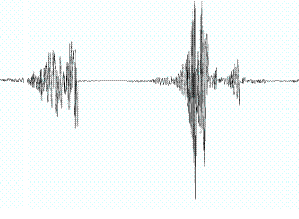Multifractal Scaling in the Solar Wind
Wieslaw Macek, Anna Wawrzaszek
The aim of our work is to examine the question of scaling
properties of turbulence in the solar wind.
We focus on the
non-homogeneous energy transfer rate in the turbulent cascade
 leading to the phenomenon of intermittency.
In particular, we
consider time series of the velocities of the slow and fast
solar wind measured in situ by the following space satellites:
(a) Helios mission (ESA) exploring the inner heliosphere at the
ecliptic plane, (b) Advanced Composition Explorer mission
(NASA) near Earth's orbit, (c) Voyager mission (NASA)
investigating the outer heliosphere and (d) Ulysses which is the
only mission that measured parameters of the solar wind out of
the ecliptic plane (also in the polar regions of the Sun). We
analyse solar wind data obtained during solar minimum and
maximum at various distances from the Sun.
leading to the phenomenon of intermittency.
In particular, we
consider time series of the velocities of the slow and fast
solar wind measured in situ by the following space satellites:
(a) Helios mission (ESA) exploring the inner heliosphere at the
ecliptic plane, (b) Advanced Composition Explorer mission
(NASA) near Earth's orbit, (c) Voyager mission (NASA)
investigating the outer heliosphere and (d) Ulysses which is the
only mission that measured parameters of the solar wind out of
the ecliptic plane (also in the polar regions of the Sun). We
analyse solar wind data obtained during solar minimum and
maximum at various distances from the Sun.
In order to look into the multifractality and intermittency in
the context of turbulence cascade, we consider generalized
weighted Cantor set. This model describe a standard scenario of
 cascading eddies, each breaking down into two new ones, but not
necessarily equal and twice smaller. Our model involves two
scaling parameters and one probability measure parameter
allowing to describe more intermittent data.
cascading eddies, each breaking down into two new ones, but not
necessarily equal and twice smaller. Our model involves two
scaling parameters and one probability measure parameter
allowing to describe more intermittent data.
We verify the proposed model and possibility of its application
for a better modeling of the irregular solar wind energy
transfer. In particular, we focus on determination of
multifractal characteristics, such as generalized dimensions,
singularity spectra and parameters describing the degree of
multifractality and the degree of asymmetry. We compare the
calculated generalized dimensions and singularity spectra for
the solar wind with that for the generalized two-scale Cantor
set model. We demonstrate that the universal shape of the
multifractal spectrum resulting from the multiscale nature of
the cascade in the solar wind is often rather asymmetric. It
worth noting that we observe the evolution of multifractal
scaling of the solar wind in the inner and outer heliosphere.
Moreover, we use our model to consider large-scale fluctuations
in magnetic field intensity before and after crossing the
termination shock by the Voyager spacecraft. We also discuss the
importance of this model for the description of the attractor
properties determined from the solar wind data.
Our analysis show that the model with different scales is in a
very good agreement with the experimental data in the whole
range of the multifractal spectra for both positive and negative
values of the generalized dimensions. Therefore, we argue that
there is a need to use a two-scale cascade model. Hence we
propose this model as a useful tool for analysis of intermittent
turbulence in various environments. We hope that our new more
general asymmetric multifractal model can shed light on the
nature of turbulence and will be usefull for the construction of
the global picture of the multifractal scaling in heliosphere.
|

